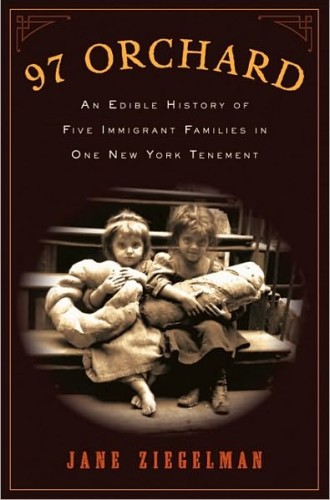A review of 97 Orchard
Jane Ziegelman writes in 97 Orchard that gefilte fish, one of many immigrant food traditions she describes, came to New York City's tenements with German-speaking Jews at the end of the 19th century. In its original form, the dish featured a chopped and seasoned fish mixture stuffed into the fish's skin before the fish was baked. The dish appeared, therefore, to be simply baked fish, but actually was something more complicated, more carefully constructed—it initially perhaps disappointed diners' expectations, but then delighted them.
Ziegelman's book resembles this early recipe. Its title promises an interesting collection: stories of five immigrant families and their foodways. Delving into its pages, however, the reader finds that these families function more as touchstones for Ziegelman than as fully explored biographical subjects. We learn very little about the families themselves, but what Ziegelman does serve up—a rangy survey of urban immigrants' foodways in the 19th and early 20th centuries—gives a pretty satisfying taste of their world.
The five families with which Ziegelman frames her story emblematize periods and provenances significant in U.S. immigration history. The Glockners, antebellum Germans, came to this country in the 1840s and, in the 1860s, built the impressive apartment building at 97 Orchard Street in Manhattan (it is now part of the Lower East Side Tenement Museum). The Moores were an Irish couple forced to migrate separately during the terrible potato blight of the 1840s; the Gumpertz family, German-speaking Jews who came in 1870; the Rogarshevsky family, Lithuanian Jews who entered at Ellis Island in 1901; and the Baldizzis, Italians who came to the U.S. in the 1920s.





